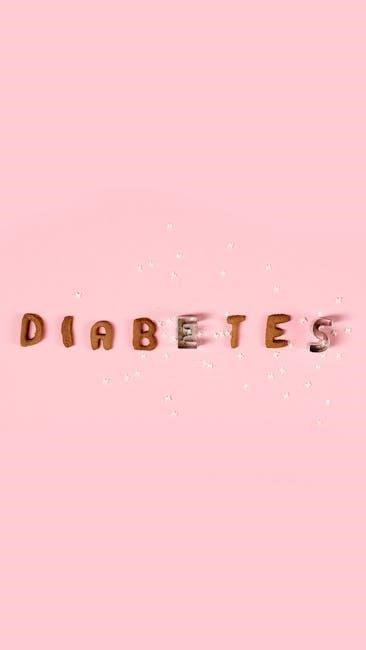hcg 500 calorie diet plan pdf

The HCG 500 Calorie Diet Plan offers a structured approach to weight loss, utilizing HCG injections to target fat stores while adhering to a strict 500-calorie intake.
Overview of the HCG Diet
The HCG Diet is a popular weight loss program that combines HCG injections with a low-calorie diet to promote rapid fat loss. It is divided into three distinct phases: loading, weight loss, and maintenance. During the loading phase, participants consume high-fat foods to prepare the body for the diet. The weight loss phase involves a strict 500-calorie diet while continuing HCG injections, which help mobilize stored fat. The maintenance phase focuses on transitioning to a normal diet without regain. The diet is based on the protocol developed by Dr. A.T.W. Simeons, emphasizing fat loss over muscle loss. It is designed to reset metabolism and reduce hunger, making it easier to stick to the program. Adherence to the plan is crucial for success and safety.
Importance of the 500-Calorie Restriction
The 500-calorie restriction is a cornerstone of the HCG Diet, designed to create a significant calorie deficit while targeting abnormal fat reserves. By drastically reducing caloric intake, the body is forced to rely on stored fat for energy, which is mobilized by the HCG hormone. This combination accelerates weight loss, particularly in stubborn areas like the abdomen and thighs. The strict calorie limit ensures that fat loss occurs rapidly, while HCG helps suppress hunger and prevent muscle loss. This phase is temporary but critical, as it resets metabolism and reduces cravings, making long-term weight management more achievable. Adherence to the 500-calorie rule is essential for maximizing results and avoiding plateaus.
Structure of the Diet Plan PDF
The HCG 500 Calorie Diet Plan PDF is a comprehensive guide outlining the three phases of the diet. It includes detailed meal plans, food lists, and tracking tools to ensure adherence. The PDF typically contains a printable phase 2 grocery list, meal trackers, and water intake logs to monitor progress. It also outlines the rules of the 500-calorie diet, such as portion control and approved foods, based on Dr. Simeons’ original protocol. This structured format helps dieters stay organized and motivated, providing clear guidelines for each stage of the program. The digital download is designed for easy printing and daily use, making it a practical resource for those following the HCG diet.

Phase 1: Loading Phase
Phase 1 lasts two days, focusing on high-fat, high-calorie intake to prepare the body for weight loss, while HCG injections begin the fat-mobilization process.
Day 1-2: High-Fat and High-Calorie Consumption
During the first two days of the HCG diet, participants are encouraged to consume high-fat, high-calorie foods to replenish fat reserves. This phase involves eating rich foods like fatty meats, cheeses, and oils to prepare the body for the upcoming calorie restriction. The goal is to stockpile fat in the right places, ensuring the body can utilize stored fat during the low-calorie phase. HCG injections are typically administered during this period to initiate the fat-mobilization process. This phase is crucial for the diet’s success, as it helps prevent extreme hunger and metabolic slowdowns later on. The high-calorie intake is counterintuitive but essential for the diet’s effectiveness. Transitioning to the 500-calorie diet in Phase 2 follows this initial loading period.
Role of HCG Injections During Phase 1
HCG injections play a vital role during Phase 1 of the diet, as they help prevent fat accumulation and initiate lipid mobilization. The injections work by interfering with the body’s fat-storage mechanisms, ensuring that consumed fats are utilized rather than stored. This process prepares the body for the upcoming weight loss phase by resetting metabolism and fat-burning pathways. The HCG hormone also helps in reducing hunger and cravings, making the transition to the low-calorie phase more manageable. Administering HCG during these initial days is essential for maximizing the diet’s effectiveness and ensuring a smooth progression into Phase 2. Proper dosing and timing are critical for optimal results.

Preparation for Weight Loss
Preparation for weight loss on the HCG 500 Calorie Diet Plan involves strategic steps to ensure a successful transition into the program. During Phase 1, participants are advised to consume high-fat, high-calorie foods for two days while initiating HCG injections. This phase is designed to reset the body’s metabolism and prepare it for fat mobilization. The HCG injections play a crucial role in preventing fat storage and kickstarting the weight loss process. It is essential to follow the protocol closely to avoid any potential regain of weight and ensure a smooth transition into the low-calorie phase. Proper preparation during these initial days sets the foundation for achieving optimal results in the subsequent phases of the diet plan.
Phase 2: Very Low-Calorie Diet (VLCD)
Phase 2 begins on day 3, transitioning to a strict 500-calorie diet while continuing HCG injections. This phase focuses on rapid weight loss through calorie restriction and adherence to the approved food list, ensuring fat mobilization and metabolic reset as outlined in Dr. Simeons’ protocol.
Transition to 500-Calorie Diet
Transitioning to the 500-calorie diet marks the beginning of Phase 2, typically starting on day 3. This phase involves a significant reduction in caloric intake, focusing on a strict regimen of lean proteins, vegetables, and minimal carbohydrates. The HCG injections continue to play a crucial role, aiding in fat mobilization and preventing hunger pangs. Dieters must adhere to the approved food list, avoiding any deviations to ensure optimal weight loss. This phase is designed to maximize fat burning while maintaining muscle mass, making the transition period critical for achieving the desired metabolic reset and weight loss results.

Approved Food List for Phase 2
During Phase 2 of the HCG diet, the approved food list is strictly limited to ensure adherence to the 500-calorie restriction. Lean proteins such as chicken breast, turkey, and fish are permitted, along with select vegetables like spinach, broccoli, and cucumbers. Fruits like apples, oranges, and strawberries are also allowed in moderation. The diet emphasizes avoiding sugars, fats, and carbohydrates, focusing instead on whole, nutrient-dense foods. Portion control is critical, with specific serving sizes outlined in the Simeons protocol. Adhering to this food list is essential for maximizing weight loss and maintaining metabolic balance during the VLCD phase.
Meal Planning and Portion Control
Meal planning and portion control are crucial during Phase 2 of the HCG diet to ensure adherence to the 500-calorie limit. Meals must be carefully structured, with precise portion sizes to avoid exceeding the daily calorie intake. Protein sources like chicken breast, turkey, and fish are measured in 100-gram servings, while vegetables and fruits are limited to specific quantities. The diet requires strict avoidance of fats, sugars, and carbohydrates, focusing on whole, nutrient-dense foods. A meal tracker or guide, often included in the HCG diet PDF, helps individuals monitor their intake and stay compliant. Proper portion control is essential for achieving optimal weight loss results and maintaining metabolic balance.
Challenges and Tips for Success
The HCG 500-calorie diet presents challenges, including hunger, cravings, and social pressures. To succeed, staying hydrated is essential, as water helps suppress hunger and supports metabolism. Meal prepping and tracking progress with a food diary or app can maintain discipline. Incorporating physical activity, such as light exercise, can also enhance results. Avoiding temptations by clearing unhealthy foods from your environment is crucial. Seeking support from online communities or a healthcare provider can provide motivation. Consistency and adherence to the diet plan are key to overcoming challenges and achieving sustainable weight loss. Using the HCG diet PDF as a guide ensures you stay on track and maximize your results.

Phase 3: Maintenance Phase
After stopping HCG injections, continue the 500-calorie diet for three days, then gradually reintroduce foods to maintain weight loss and reset metabolism for long-term success.
Post-HCG Diet Transition
After completing the HCG injections, the transition phase begins. It’s crucial to continue the 500-calorie diet for three more days to prevent weight regain and stabilize results.
This period allows the body to adjust to the absence of HCG while maintaining the metabolic reset achieved during the diet. Gradually reintroducing foods should be done carefully to avoid shocking the system.
Focus on low-calorie, nutrient-rich options and monitor weight closely. This phase is essential for long-term weight management and ensuring the body adapts to the new metabolic balance.

Reintroduction of Foods
After the HCG diet, reintroducing foods requires careful planning to maintain weight loss and avoid regain. Start with low-calorie, nutrient-dense options like lean proteins, vegetables, and whole grains.
Avoid high-sugar and high-fat foods initially, as they can disrupt the metabolic reset. Gradually incorporate new foods one at a time to monitor reactions and ensure tolerance.
Portion control remains essential, as overeating can hinder progress. The body needs time to adapt to the new metabolic state, so patience is key during this transition phase.
Long-Term Weight Management Strategies
Long-term weight management after the HCG diet involves adopting sustainable habits to maintain results. Focus on a balanced diet rich in lean proteins, vegetables, and whole grains.
Regular physical activity, such as walking or strength training, helps maintain muscle mass and metabolism. Monitoring food portions and calorie intake prevents weight regain.
Staying hydrated and getting adequate sleep are crucial for overall health and metabolic function. Avoid unhealthy snacks and sugary drinks to support long-term success.
Mindset plays a key role; staying motivated and avoiding emotional eating helps maintain a healthy lifestyle. Regular weigh-ins can also help track progress and make adjustments as needed.

Benefits of the HCG 500 Calorie Diet
The HCG 500 Calorie Diet promotes rapid weight loss, reduces body fat, and resets metabolism, helping achieve a slimmer, healthier physique effectively and safely.
Significant Weight Loss Results
The HCG 500 Calorie Diet Plan is renowned for its rapid and significant weight loss results, with many dieters reporting an average loss of 1-2 pounds per day.
This dramatic reduction is attributed to the combination of HCG injections, which target stored fat, and the strict 500-calorie intake, ensuring fat reserves are metabolized efficiently.
By focusing on fat loss rather than muscle mass, the diet helps maintain a healthy body composition while achieving substantial weight reduction in a short period.
The structured approach of the HCG plan ensures consistent progress, making it a popular choice for those seeking noticeable results quickly and safely.
Reduction in Body Fat Percentage
The HCG 500 Calorie Diet Plan is designed to significantly reduce body fat percentage by targeting stored fat reserves.
HCG injections work to mobilize and metabolize fat, particularly in stubborn areas like the abdomen and hips, while the 500-calorie diet creates a calorie deficit.
This combination not only sheds pounds but also reshapes the body, preserving muscle mass and focusing on fat loss.
Many dieters experience a noticeable decrease in body fat percentage, leading to improved body composition and a more toned appearance.
The structured approach ensures that fat loss is sustained, making it easier to maintain a healthier metabolism and body fat percentage long-term.
Improved Metabolic Reset
The HCG 500 Calorie Diet Plan promotes an improved metabolic reset by targeting stored fat and enhancing the body’s ability to burn calories efficiently.
During the low-calorie phase, HCG injections help reset metabolism by mobilizing fat reserves, which are then utilized for energy.
This process not only aids in weight loss but also helps the body adapt to a new metabolic baseline, making it easier to maintain weight loss long-term.
The diet’s structure ensures that the metabolism remains active, preventing stagnation and promoting sustained fat burning.
By combining calorie restriction with HCG, the body learns to function more efficiently, leading to improved metabolic health and a reduced risk of weight regain.
Risks and Side Effects
The HCG 500 Calorie Diet Plan may cause side effects like fatigue, dizziness, and gallstone risks. Severe caloric restriction can lead to nutrient deficiencies and health complications.

Common Side Effects of the Diet
Common side effects of the HCG 500 Calorie Diet Plan include fatigue, dizziness, and gallstone risks. The severe caloric restriction may lead to nutrient deficiencies, while HCG injections can cause mild pain or bruising at injection sites. Some individuals may experience mood swings or irritability due to the drastic reduction in food intake. Additionally, the sudden shift in metabolism can result in temporary hair loss or skin issues. It is crucial to monitor these symptoms and seek medical advice if they persist or worsen. Proper supervision and adherence to the diet’s guidelines can help mitigate these side effects and ensure a safer weight loss journey.
Potential Risks of Severe Caloric Restriction
The HCG 500 Calorie Diet Plan’s severe caloric restriction poses risks such as gallstone formation, electrolyte imbalances, and muscle loss. Prolonged low-calorie intake can deplete essential nutrients, weakening the immune system. Additionally, the drastic reduction in food consumption may lead to dehydration and dizziness. Some individuals may experience hair loss or skin issues due to inadequate nutrition. The diet’s restrictive nature can also result in fatigue and decreased energy levels, impacting daily activities. It is crucial to approach this diet under medical supervision to minimize these risks and ensure overall health is not compromised during the weight loss process.
Importance of Medical Supervision
Medical supervision is crucial for the HCG 500 Calorie Diet Plan to ensure safety and effectiveness. A healthcare provider can monitor for potential side effects, such as gallstones or electrolyte imbalances, and address them promptly. They also help participants adhere to the strict dietary guidelines, adjusting the plan if necessary to prevent complications. Supervision ensures that the drastic caloric reduction is managed safely, minimizing risks like dehydration and nutrient deficiencies. Professional guidance also helps individuals maintain long-term weight loss and overall health. Consulting a doctor before starting this diet is essential to avoid adverse effects and tailor the program to individual needs.

Where to Find the HCG 500 Calorie Diet Plan PDF
The HCG 500 Calorie Diet Plan PDF can be found on trusted online platforms like Etsy, offering digital downloads with food lists, meal trackers, and guidelines.
Online Resources and Downloads
Online platforms like Etsy offer digital downloads of the HCG 500 Calorie Diet Plan PDF, providing detailed phase 2 food lists, meal trackers, and guidelines.
These resources include printable grocery lists, water trackers, and rules for adhering to the 500-calorie regimen, ensuring a structured approach to weight loss.
Additionally, websites like JenDrJenGentry.com provide progress charts and instructions for managing diet interruptions, emphasizing the importance of consistency and medical guidance.
These downloadable materials are designed to support dieters in following Dr. Simeons’ protocol accurately, making it easier to stay on track throughout the program.
How to Choose a Reliable Guide

When selecting a reliable HCG 500 Calorie Diet Plan guide, ensure it aligns with Dr. Simeons’ original protocol and includes detailed phase-specific instructions.
Look for resources that provide comprehensive food lists, meal trackers, and clear guidelines for each phase of the diet.
Reputable guides often include progress charts and instructions for managing interruptions, emphasizing consistency and medical supervision.
Digital downloads from trusted sources like Etsy or medical spas, such as Suddenly Slimmer Med Spa, offer verified materials that adhere to the diet’s strict requirements.
Choose guides that emphasize safety and sustainability, ensuring they are backed by medical professionals or established weight loss centers.
Conclusion
The HCG 500 Calorie Diet Plan offers a structured approach to significant weight loss, combining HCG injections with a strict low-calorie regimen.
By following the protocol, dieters can reset their metabolism and reduce body fat effectively.
However, success requires strict adherence to the plan and medical supervision to mitigate potential risks.
With proper guidance and commitment, this diet can lead to long-term weight management and improved health outcomes.
Always consult a healthcare professional before starting to ensure safety and suitability for your specific needs.



Leave a Reply
You must be logged in to post a comment.